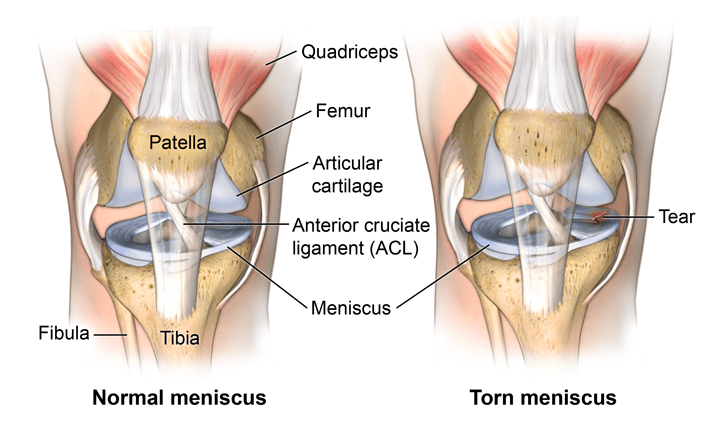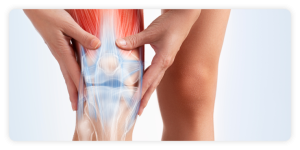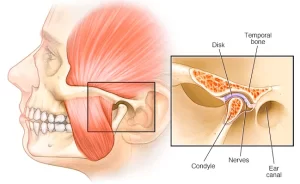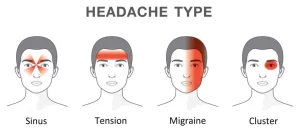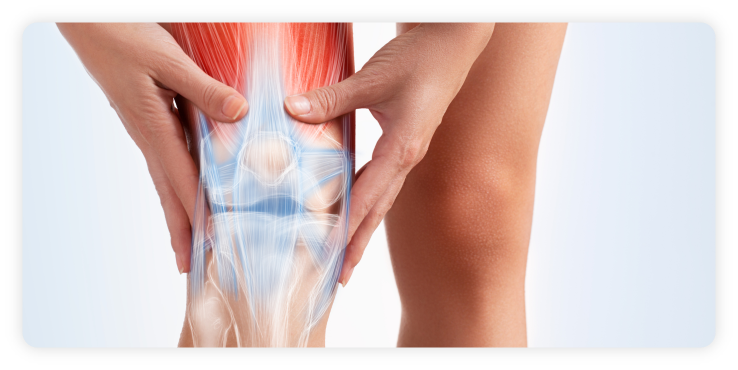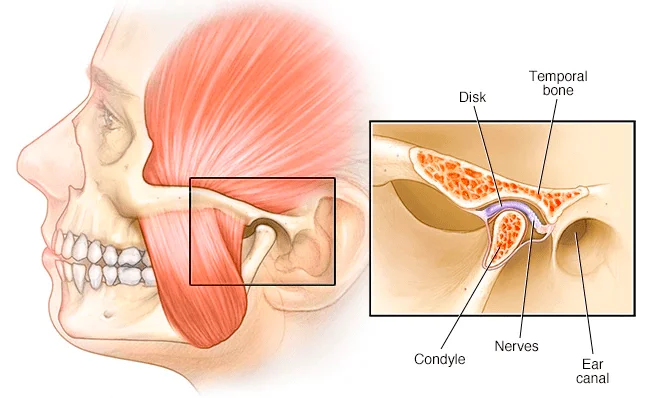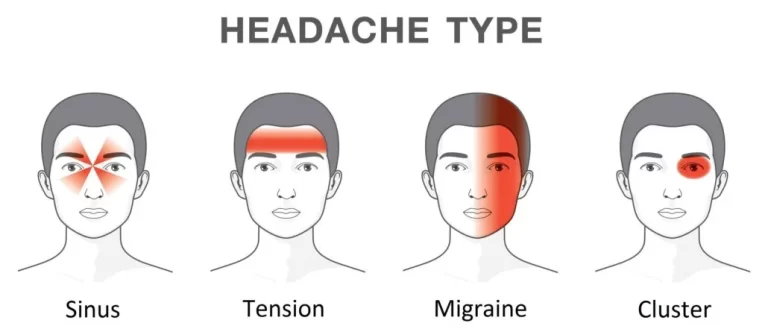Knee Meniscus Pain
The knee is the largest joint in the body. The knee allows the leg to bend where the femur (thighbone) attaches to the tibia (shinbone). The knee flexes and extends allowing the body to perform many activities from walking, running, climbing, and squatting. There are a variety of structures that surround the knee and allow it to bend and that protect the knee joint from injury.
The quadriceps and hamstring muscles are responsible for moving the knee joint. When the quadriceps muscles located on the front of the thigh contract, the knee extends or straightens. The hamstring muscles, located on the back of the thigh, are responsible for flexing or bending the knee. These muscles are also important in protecting the knee from being injured by acting to stabilise the knee and prevent it from being pushed in directions that it is not meant to go.
There are four ligaments that also stabilise the knee joint at rest and during movement namely the Medial Collateral Ligament (MCL), Lateral Collateral Ligament (LCL), Anterior Cruciate Ligament (ACL), and Posterior Cruciate Ligament (PCL).
Cartilage within the joint provides the cushioning to protect the bones from the routine stresses of walking, running, and climbing. The medial and lateral meniscus are two thicker wedge-shaped pads of cartilage attached to the top of the tibia (shin bone) called the tibial plateau. Each meniscus is curved in a C-shape with the front part of the cartilage called the anterior horn and the back part called the posterior horn. There is also articular cartilage that lines the joint surfaces of the bones within the knee, including the tibia, femur and kneecap (patella). The terminology torn knee cartilage refers to damage to one of the C-shaped menisci of the knee between the femur and tibia. As with any injury in the body, when the meniscus is damaged, irritation occurs. If the surface that allows the bones to glide over each other in the knee joint is no longer smooth, pain can occur with each flexion or extension.
Knee Meniscus Tears
A torn meniscus is damage from a tear in the cartilage that is positioned on top of the tibia to allow the femur to glide when the knee joint moves. Tears are usually described by where they are located anatomically in the C shape and by their appearance (for example, “bucket handle” tear, longitudinal, parrot beak, and transverse). The better the blood supply, the better the potential for recovery. The outside rim of the cartilage has a better blood supply than the central part of the “C.” Blood supply to the knee cartilage also decreases with age, and up to 20% of normal blood supply is lost by the age of 40 years old.
Causes of Knee Meniscus Tears
Motions that require pivoting and sudden stops can cause the end of the femur to grind into the top of the tibia, pinching and potentially tearing the cartilage of the meniscus. This knee injury can also occur with deep squatting, kneeling, or when lifting a heavyweight. Meniscus tear injuries can also often occur during athletic activities like tennis, basketball, and golf. The risk of developing a torn meniscus increases with age because cartilage begins to gradually wear out, losing its blood supply and its resilience. Increasing body weight also puts more stress on the meniscus. Routine daily activities like walking and climbing stairs increase the potential for wear, degeneration, and tearing. As some of the fibers of the cartilage are interconnected with those of the ligaments that surround the knee, meniscus injuries may also be associated with tears of the collateral and cruciate ligaments depending upon the mechanism of injury.
A “pop” might be heard when a meniscus is torn. Most people can still walk on their injured knee. Over 2 to 3 days, the knee will gradually become stiffer and swollen. If you’re experiencing symptoms, a chiropractor in Singapore may assist in assessing the injury and recommending suitable care options.
Symptoms of Knee Meniscus Tears
The most common symptoms of a meniscus tear are pain, stiffness, swelling, locking of the knee, sensation knee giving way, and not being able to move the knee through its full range of motion. Without treatment, a piece of meniscus may come loose and drift into the joint. This can cause the knee to slip, pop or lock.
Knee Meniscus Pain Treatment
Physical therapy can help control pain and swelling in the knee area, as well as restore full strength and mobility to the knee. Treatment includes manual therapy, stretching, and joint mobilisation to reduce swelling, stiffness, and restore muscle function around the knee. Cryotherapy to help control any swelling and electro-stimulation therapy to gently stimulate the muscles around the knee will be incorporated. Strengthening exercises to build strength during recovery and help restore full movement to the knee will also be prescribed. The use of compression bandages or stockings to prevent further accumulation of swelling may be recommended if needed. If in doubt, please seek professional advice.
Seeking Care for a Meniscus Injury?
If you’re experiencing knee pain or stiffness due to a meniscus tear, early intervention may help manage symptoms and support joint function. Visit our chiropractic clinic in Singapore to explore care options for your condition and activity level.
Check out our popular articles: Diastasis Recti, Tight Back Muscles, Irritable Bowel Syndrome (IBS), Temporomandibular Joint (TMJ) Dysfunction, Tennis Elbow, Wrist Tendon Injury, Sciatica, Whiplash, Hernia, Herniated Disc (Slipped Disc).
